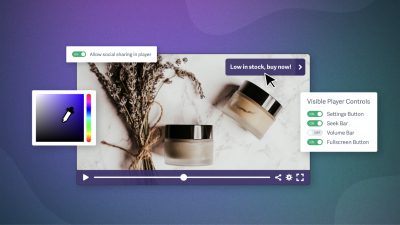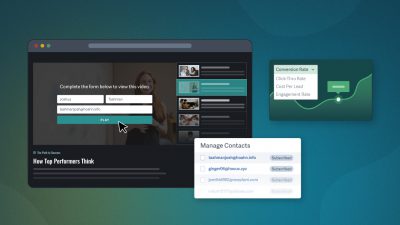There is only one question that truly counts for online video. It will shape everything, from production to editing to the final product. Read on to find out what it is, and how to answer it properly.
Wait, I have so many questions?
Sure, there are 1,000’s of questions one can ask about online video, such as:
- What format should my video be in?
- How do I optimize video for the web?
- Will people actually watch my video?
But none of those questions actually matter unless you can answer this one first:
What are you trying to achieve with online video?
Answer that question, then work backwards from there. Everything depends on that question. From the choice of camera, writing the script, the editing process, to exporting your video and choosing where to publish it, you can’t get started until you know where you’re going.
Here at SproutVideo, we ask people that literally everyday as we help them sort through the myriad of options entailed in making a decision about a video hosting provider and publishing videos to the web. It helps ensure we don’t point anyone in the wrong direction. It also helps us come up with creative ways to solve different types of problems.
How to answer that question
Fill in the blank: I want to use online video to achieve… a higher conversion rate? To attract more leads? Rank higher for key search terms? To increase the value of my subscription or paid content packages? Improve employee training?
Come up with your main goal for your online videos, and only then start planning it out. You will find that answering this one question properly will actually prevent a lot of issues from surfacing down the road. It can help obviate some bad questions to have to answer, such as:
- What do I do if someone steals my online videos?
- Is Youtube bad for small business?
- Should you ever self-host your videos?
What next?
Let’s work through a couple answers to that question. This will give you an idea of how your goal for your video will guide all your future decisions regarding that online video.
Case #1: I want to achieve a higher search ranking with my video
If you are taking this direction, there is a relatively clear path to follow. The first step will be keyword research. What terms do you want to rank for?
Which get the most search traffic, and how competitive are they?
It’s best to only pick a handful of closely related terms. Trying to optimize against more than 3-4 will probably do more harm than good.
Once you know the keywords you are trying to rank for, design your video script to include those terms. Try to answer questions people searching for those terms might have in mind.
It would be smart to use this approach for the textual content on your website as well. Still, take care to avoid keyword stuffing. These search terms should appear naturally in the video and on the page because your content is focused on this subject, right?
Beyond that, consider transcripting your video. This not only helps with accessibility, it also allows search engines to better understand your video content. It’s a great way to increase keyword density on the page to boot.
Next, align your video title, description, and tags with the title of the page, and optimize all of those factors against the top 1-2 keywords you are trying to rank for. This will help ensure your video metadata works in your favor when it is read by search engines.
You are now ready to publish this video to the web. Importantly, do not upload this video to Youtube or another video sharing site that gets more traffic than your site. You want your site to rank for it, right?
In that case, you need a video hosting provider that will help you with video sitemaps, and will not use your video to promote their own platform. For instance, once you do a quick initial set up, SproutVideo will automatically add new videos to your video sitemap, and puts you in control of your content.
If you’ve covered the basics, you might want to take a deeper dive into video SEO with these seventeen best practices.
Case #2: I want to get more leads with online video
With lead generation, for a majority of industries, it’s all about getting those email addresses and growing that subscriber list. Luckily, video is a great tool for email capture when used properly.
There are actually a couple ways to do this. For instance, you could write a thorough article on a topic that will attract quality traffic to your website. Then, insert an email-gated video after the first few paragraphs. The video should expound upon the main point in the article, and contain some key data or other insights the reader cannot get elsewhere.
Engaged readers who want to hear what you have to say are likely to be high quality leads, so design your video to entice them. Since you are providing instant value to the reader in exchange for their contact information, requiring an email address to watch a video that contains unique information pertinent to the article tends to work well.
Another way to approach lead capture is with a post-play screen. In this case, the context of the video on the page is slightly less important. Rather, the content of the video has to be on point.
You could get away with a lot less textual content, for example. The idea for this video is to either leave the viewer wanting more, or to be so overwhelmingly impressed (with your company, ideas, services, product, etc) that they are motivated to fork over their email address.
It is worth mentioning that a post play screen can do a lot more than plain old email capture. It could also be a link to a purchase page, another landing page, or to contact a sales rep directly. Here is a thorough look at .
Want to learn how your specific goal for video should guide your path to success? Contact us, tweet at us, or ask us in the comments below.








